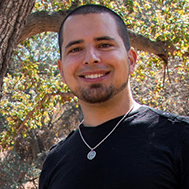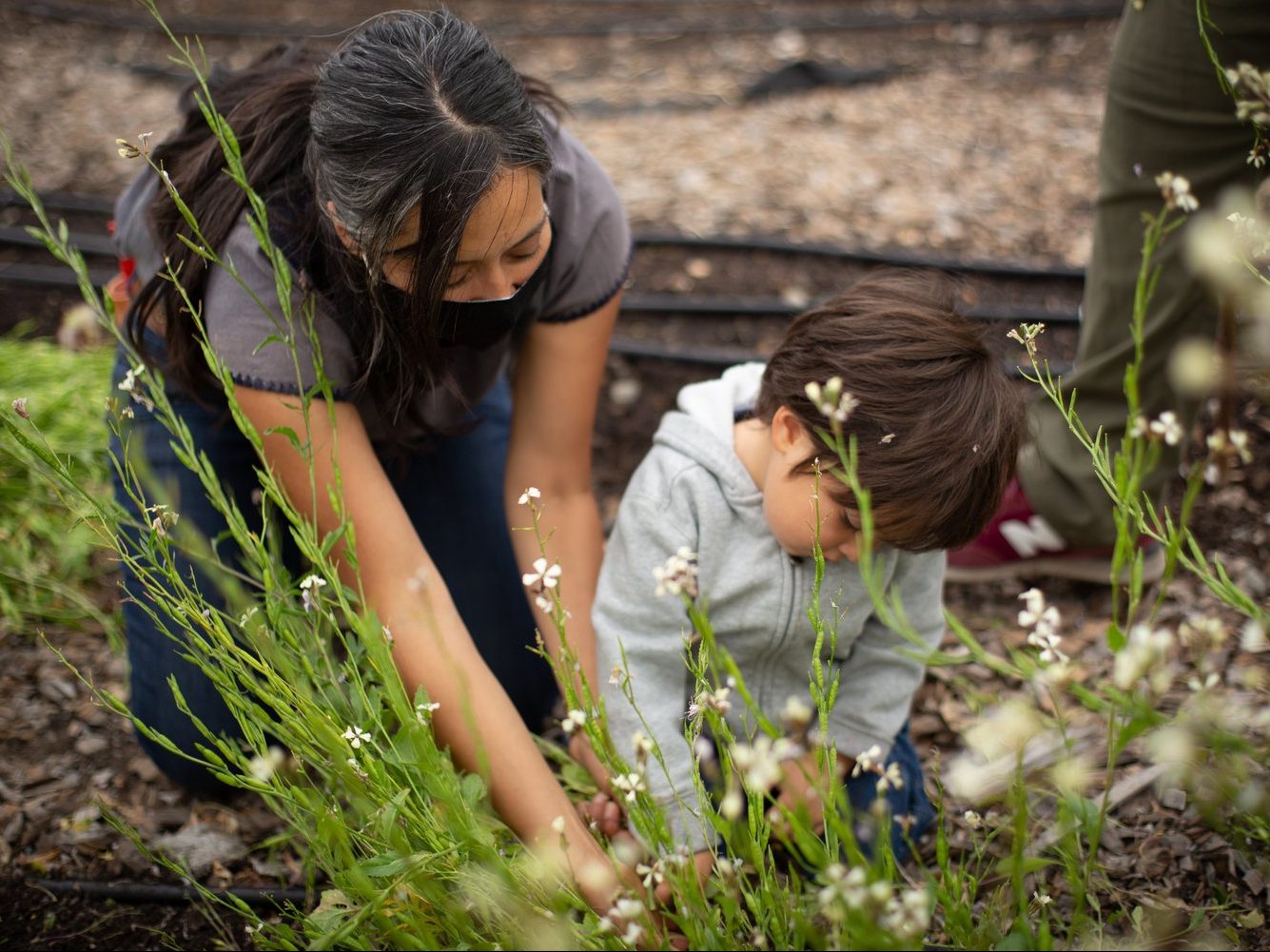It is interesting to grow up in an old world family with new world ideas. My childhood dinners were created by eyes looking back at recipes thousands of years old, but also forward toward the wonders the future might bring. I was told from a very young age that I was Jewish, but that was all the information I received from my family. Like many others raised in a non-religious household, by the time I was an adult, the only associations I had with Judaism were my grandparent’s food and language: Molokheya and Judeo-Arabic. What could be more Jewish than that?
READ: Jewish Languages from Aramaic to Yiddish
I was born in Los Angeles to my Egyptian mother and my Mexican father. It wasn’t a union that my grandparents could have even imagined when they were living in Cairo. But they accepted it, cognizant of the decision they made to raise their daughters as secular Americans. They made that decision after a lifetime of forced travels brought on by their Judaism. From their own modern-day Exodus from Egypt to France (forced upon them by President Gamal Abdel Nasser in the 1950s), to the difficult times in France as they awaited approved passages to America, until they arrived to an Ashkenazi community in Wisconsin who was ready and willing to accept and support Jews….but not Arabs. From Wisconsin they saved everything they could to get someplace warmer and where they could re-invent themselves. So they ended up in Los Angeles, spoke nothing but French outside the house, and put a Christmas tree in the window.
The first time I entered a synagogue was many years after the passing of my grandparents. I was 19 years old, and I had only accepted the invitation extended to me because I was a starving college student and they were offering free food. It was my first religious Jewish experience, and it was the most alien thing I’d ever experienced. It was a confusing surprise that absolutely nothing was familiar: especially the language and the food. But I did feel at home in one very important way; in fact, it is the reason that I did not walk away. My morals resonated with the morals I heard from the bimah. This was all about how to be a good person, which was a discussion that permeated my youth. That kindred simplicity made me look around at Ashkenazi faces and still know that I belonged.
Unfortunately, it took me years before I was able to join a synagogue. When I did, I approached Judaism with all of my strength, and thankfully it was matched by wonderful Ashkenazi rabbis willing to teach my everything they knew. But despite the vast knowledge these rabbis had to share, they were unaware of what they didn’t know, and therefore couldn’t help me with some of my hardest struggles. The first struggle I experienced was the differences in pronunciation of Hebrew. I knew no Hebrew, but I knew that the sounds I was being taught lacked the sounds my grandparents’ Hebrew had. I was told that Jewish food is matzah balls and gefilte fish. When I asked when we were going to have molokheya, bishamel, or mahshi, no one knew what I meant. But why hadn’t anyone heard of my foods? I asked myself. I was hitting a brick wall with my ability to progress, because the more I learned about Judaism, the less I felt I had a legitimate Jewish heritage, and I needed to feel that connection.
Thankfully, I knocked on the right doors and with the help of Judeo-Arabic teachers, I slowly put the pieces together. A picture of Judaism formed in my mind that was both old and new, that found joyous wonder in the depth of our tradition, yet fully embraced the new situations and creations the modern world had to offer. I slowly found my heritage in Judaism again, one that finally felt familiar, yet ancient and so much bigger than me. Eventually I discovered how much my grandparents were a part of this tradition. Their tradition is one in which nearly 20 Sephardic rabbis (including three chief rabbis) allow the use of electricity on Yom Tov (Jewish holidays in which many Shabbat restrictions are observed). It is a Judaism that has maintained traditions of soft matzah, Eastern melodies for Torah readings, and encouraged easy conversions. A Judaism that said everything that is new can be brought into Torah. When the former chief rabbi of Egypt, Rabbi Aharon ben Shim’on was asked whether someone could use matches on Yom Tov, he could have said no and left it at that. But instead, he wrote an introduction that sums up the Sephardic mentality:
Human knowledge has increased through the investigation and the new discoveries of the principles of Creation, and with it, man’s industrial and technical capabilities. Every day there are innovations which were inconceivable for our ancestors or even for our own elders… Only through a great patient effort, and with a clear and calm mind, and with enough available time free from troubles, will it be viable to analyze these innovations and compare the classic principles with the new discoveries. Searching with candles every comparable detail which could be found in the Talmud –which is like a deep ocean– to arrive, perhaps, to a practical conclusion and final ruling. And in addition to all this, once a conclusion is reached, one has to have a special merit to be spared from the critics, those whose expertise is to condemn, because they were trained to criticize arguments, and not to build them
-Rabbi Rafael Aharon Ben Shim’on, former Chief Rabbi of Cairo, in his responsa to the use of matches on Yom Tov
In the end, his decision wasn’t as important as his approach to the question. Unfortunately, as with most things in life, with great joy came great sadness. It became painfully obvious that most of Sephardic Jewry as a whole has followed one of two paths. The first path was one of trying to make it in the new world, leaving behind their tradition that caused them a lifetime of hardships and persecution. The second path was to conform their traditions and religious life to the normative Jewish presence, namely, to conform to Ashkenazi practices, schools, and traditions. They swapped their Kaftans for black hats, their soft matzah for boxed crackers, and their diverse traditions for membership to the orthodox movement. I had found the precious treasure I was looking for, but had discovered it on the deck of a sinking ship.
It was during this transformative process that I started dating my longtime friend Jenni, who was on her own path toward Judaism. Jenni was raised in a very strict Christian community, and she was starting to realize that her religion’s ideals weren’t being practiced by many of the people she cared most about in the world. She started looking into Judaism and even moved to a flat across the street from a synagogue. After having spoken to two Orthodox rabbis, she was worried that the do’s and dont’s in the Orthodox conversion process described to her might destroy whatever was left of her relationship with God. She was also concerned that unless she undertook an Orthodox conversion that the congregations she had been exposed to would never accept her as Jewish. And she was scared that I wouldn’t accept her since I was growing into a much more observant life. And truth be told, if I had only been learning what Orthodox Judaism was teaching, she might have been right.
But having read the sections regarding conversion from the former chief rabbi of Egypt (Nehar Misrayim 111a), I noted that the modern day Conservative conversion was stricter than the process outlined by the chief Egyptian rabbinate. I also learned that the very strict Orthodox conversion process is a very recent phenomena, that smells of tradition but tastes like politics. So I encouraged her to take the Conservative Intro to Judaism program at American Jewish University. And it was during that process that we were guided to Temple Beth Am, a Conservative temple in Los Angeles, and it was there that we made our home.
READ: How to Find an Intro to Judaism Class
Our wedding was our own special mix of Sephardic and Ashkenazic influences, and I don’t think there could ever be a more beautiful combination. Through this process we became even more linked to Temple Beth Am and Rabbi Kligfeld, both of whom have a large respect for the Sephardic tradition.
This past Pesach (Passover), Rabbi Kligfeld, Rabbi Lucas, and I introduced our community to soft Sephardi matzah. I feel tremendously supported to continue exercising my Sephardi pronunciation and learning my tradition’s melodies for Torah readings. All of the staff of Temple Beth Am have supported Jenni and I both publicly and privately, in amazing ways too numerous to mention, but all of which accounted for in our hearts. And so while my Egyptian grandparent’s might not have ever pictured me in an Ashkenazi synagogue, if they were alive I’m sure they would have felt I am where I needed to be.







